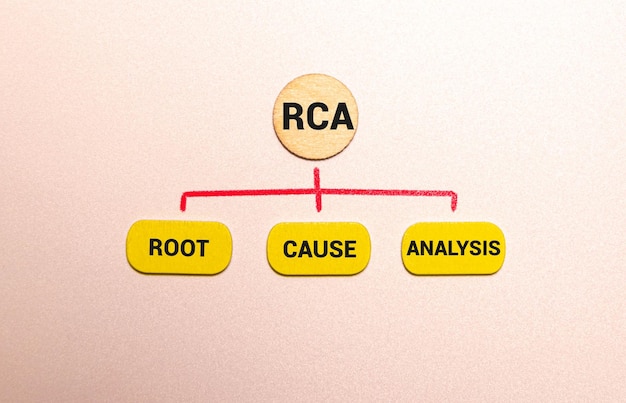US AI Research: Explainable AI (XAI) for Trustworthy Systems

US AI research emphasizes Explainable AI (XAI) to build trustworthy and transparent systems, enhancing understanding and confidence in AI decision-making processes.
The landscape of US AI Research: Understanding the Role of Explainable AI (XAI) in Building Trustworthy and Transparent Systems is rapidly evolving, focusing on the critical need for transparency and accountability. As artificial intelligence becomes more integrated into daily life, the demand for systems that are not only effective but also understandable is paramount.
The Growing Importance of Explainable AI (XAI) in the US
Explainable AI (XAI) is becoming increasingly vital in the US as AI systems are deployed across various sectors. The lack of transparency in many traditional AI models, often referred to as “black boxes,” poses significant challenges to trust and adoption. XAI seeks to address these challenges by making AI decision-making processes more transparent and interpretable.
What is Explainable AI?
Explainable AI (XAI) refers to techniques and methods that allow humans to understand and interpret the decisions made by AI systems. Unlike black-box models, XAI provides insights into how the AI arrived at a particular conclusion, fostering trust and enabling better oversight.
Why is XAI Important?
The importance of XAI stems from several factors, including regulatory compliance, ethical considerations, and the need for user trust. In regulated industries such as finance and healthcare, transparency in decision-making is often a legal requirement. Ethically, XAI ensures fairness and accountability, preventing biased or discriminatory outcomes.

- Building Trust: XAI helps users understand and trust AI systems by providing clear explanations of their decisions.
- Ensuring Compliance: XAI enables organizations to meet regulatory requirements for transparency and accountability.
- Improving Performance: XAI can reveal biases and shortcomings in AI models, leading to improvements in performance and reliability.
- Enhancing Adoption: By making AI more understandable, XAI encourages wider adoption and acceptance among users.
In conclusion, the growing importance of Explainable AI (XAI) in the US is driven by the need for trust, compliance, and ethical considerations in AI deployments. XAI not only enhances the transparency of AI systems but also promotes their responsible and effective use.
Key XAI Techniques and Methodologies
Several XAI techniques and methodologies are being developed and refined to address the challenges of AI transparency. These approaches vary in their complexity and applicability, but they all aim to provide insights into AI decision-making processes.
LIME (Local Interpretable Model-Agnostic Explanations)
LIME is a model-agnostic technique that explains the predictions of any classifier by approximating it locally with an interpretable model. It perturbs the input data and observes how the predictions change, building a local explanation around the instance.
SHAP (SHapley Additive exPlanations)
SHAP uses game-theoretic principles to assign each feature an importance value for a particular prediction. It provides a unified framework for interpreting predictions based on Shapley values, which are known for their fairness and consistency properties.
Rule-Based Explanations
Rule-based explanations involve extracting a set of rules from an AI model that describe the conditions under which certain outcomes are predicted. These rules can be easily understood by humans and provide a clear explanation of the model’s behavior.

- Model-Agnostic Methods: Techniques like LIME and SHAP can be applied to any AI model, regardless of its complexity.
- Intrinsic Interpretability: Some models, such as decision trees, are inherently interpretable and do not require additional explanation techniques.
- Post-Hoc Explanations: These methods provide explanations after the model has made a prediction, offering insights into its reasoning.
Overall, key XAI techniques and methodologies such as LIME, SHAP, and rule-based explanations offer different approaches to understanding AI decision-making processes. The choice of technique depends on the specific requirements of the application and the type of AI model being used.
The Role of Government and Regulatory Bodies in Promoting XAI
Government and regulatory bodies in the US are playing an increasingly important role in promoting the adoption of XAI. As AI systems become more prevalent in critical sectors, regulators are recognizing the need for transparency and accountability to protect consumers and ensure fair outcomes.
NIST’s AI Risk Management Framework
The National Institute of Standards and Technology (NIST) has developed an AI Risk Management Framework to help organizations manage the risks associated with AI systems. The framework emphasizes the importance of transparency and explainability in mitigating these risks.
Federal Trade Commission (FTC) Guidelines
The Federal Trade Commission (FTC) has issued guidelines on the use of AI, warning companies against making deceptive or unfair claims about their AI systems. The FTC also emphasizes the importance of ensuring that AI systems are transparent and non-discriminatory.
Legislative Efforts
Several legislative efforts are underway in the US to address the ethical and societal implications of AI. These efforts include proposals to establish standards for AI transparency and accountability, as well as measures to protect consumers from biased or discriminatory AI systems.
- Setting Standards: Regulatory bodies are working to establish standards for AI transparency and explainability.
- Enforcing Compliance: Regulators are enforcing compliance with existing laws and guidelines to ensure that AI systems are used responsibly.
- Promoting Innovation: Government initiatives are supporting research and development in XAI to promote innovation in this critical area.
In summary, the role of government and regulatory bodies in promoting XAI is crucial for ensuring that AI systems are used ethically and responsibly. Through standards, enforcement, and support for innovation, policymakers are working to create a framework that fosters trust in AI.
Challenges and Limitations of Current XAI Approaches
Despite the significant progress in XAI research, several challenges and limitations remain. Current XAI approaches are not always applicable to all types of AI models, and the explanations they provide can sometimes be difficult to interpret or misleading.
Complexity of Explanations
One of the main challenges of XAI is the complexity of the explanations themselves. Some XAI techniques generate explanations that are too complex for non-experts to understand, limiting their usefulness in real-world applications.
Trade-off Between Accuracy and Explainability
There is often a trade-off between the accuracy of an AI model and its explainability. Highly accurate models, such as deep neural networks, are typically more difficult to interpret than simpler models, such as decision trees.
Scalability Issues
Many XAI techniques are computationally expensive and do not scale well to large datasets or complex models. This can limit their applicability in production environments where real-time explanations are required.
- Lack of Standardization: The lack of standardized metrics for evaluating the quality of XAI explanations makes it difficult to compare different techniques.
- Context Dependence: The interpretability of an explanation can depend on the context in which it is presented, making it challenging to develop universal XAI methods.
- Potential for Manipulation: XAI explanations can be manipulated to create a false sense of trust in an AI system.
To conclude, while XAI has made substantial advancements, addressing the challenges and limitations of current approaches is essential for realizing its full potential. Overcoming these hurdles will require continued research and collaboration across disciplines.
Real-World Applications of XAI in the US
XAI is being applied in various real-world applications across the US, demonstrating its potential to improve trust, accountability, and performance in AI systems. These applications span sectors such as healthcare, finance, and criminal justice.
Healthcare Diagnostics
In healthcare, XAI is being used to explain the predictions of AI models used for diagnosing diseases. By providing insights into the factors that led to a particular diagnosis, XAI can help doctors make more informed decisions and improve patient outcomes.
Fraud Detection
In finance, XAI is being used to detect fraudulent transactions. XAI techniques can explain why a particular transaction was flagged as suspicious, helping fraud analysts to investigate and prevent financial crimes more effectively.
Criminal Justice
In criminal justice, XAI is being used to assess the risk of recidivism among offenders. By providing explanations of the factors that contribute to risk scores, XAI can help judges and parole boards make fairer and more informed decisions.
- Improved Decision-Making: XAI enhances the quality of decisions made by professionals in various fields.
- Increased Trust: XAI builds trust in AI systems by providing transparent explanations of their behavior.
- Enhanced Accountability: XAI promotes accountability by ensuring that AI systems are used fairly and responsibly.
In conclusion, real-world applications of XAI in the US demonstrate its potential to transform various sectors by improving trust, accountability, and performance in AI systems. These applications highlight the importance of continued research and development in this critical area.
Future Directions and Opportunities for XAI Research in the US
The future of XAI research in the US is promising, with numerous opportunities for innovation and impact. As AI continues to evolve, the need for transparent and understandable systems will only grow, driving demand for new and improved XAI techniques.
Developing More Scalable XAI Methods
One of the key priorities for future XAI research is the development of more scalable methods that can handle large datasets and complex models. This will enable the deployment of XAI in a wider range of applications.
Creating Standardized Evaluation Metrics
Another important area of focus is the creation of standardized evaluation metrics for assessing the quality of XAI explanations. This will facilitate the comparison of different XAI techniques and promote best practices in the field.
Addressing Ethical Considerations
Future XAI research must also address the ethical considerations associated with AI transparency. This includes ensuring that XAI explanations are not used to manipulate or deceive users, and that AI systems are used fairly and responsibly.
- Interdisciplinary Collaboration: Continued collaboration between AI researchers, ethicists, and policymakers is essential for advancing the field of XAI.
- Education and Training: Investing in education and training programs will help to build a workforce that is capable of developing and deploying XAI systems.
- Public Engagement: Engaging the public in discussions about AI transparency will help to build trust and support for responsible AI innovation.
In closing, the future directions and opportunities for XAI research in the US are vast and promising. By focusing on scalability, standardization, and ethical considerations, researchers can pave the way for a future where AI is both powerful and trustworthy.
| Key Point | Brief Description |
|---|---|
| 🔍 XAI Definition | Techniques for making AI decisions understandable to humans. |
| 🛡️ Regulatory Role | Government bodies promoting XAI for responsible AI use. |
| 🏥 Healthcare Use | XAI improves AI diagnoses, enhancing doctor decisions. |
| 📈 Future Research | Focus on scalable methods and ethical AI considerations. |
FAQ
▼
Explainable AI (XAI) refers to methods and techniques used to make AI systems understandable to humans. It aims to open the “black box” of AI, fostering trust and enabling better oversight.
▼
XAI is crucial due to the need for compliance, ethical standards, and user trust. It ensures AI systems are transparent, fair, and non-discriminatory, which are vital for adoption.
▼
Techniques include LIME (Local Interpretable Model-agnostic Explanations), SHAP (SHapley Additive exPlanations), and rule-based explanations, each offering different means of making AI transparent.
▼
Government bodies like NIST and FTC are setting standards and guidelines to ensure responsible AI use, also investing in research and development for XAI.
▼
Limitations include the complexity of explanations, trade-offs between accuracy and explainability, and scalability issues, posing challenges for real-world deployments.
Conclusion
In conclusion, the exploration of US AI research highlights the essential role of Explainable AI (XAI) in building trustworthy and transparent systems. As AI continues to evolve and permeate various sectors, the demand for XAI will persist, emphasizing the importance of continued research, ethical considerations, and practical applications to ensure responsible and beneficial AI implementations across the United States.





